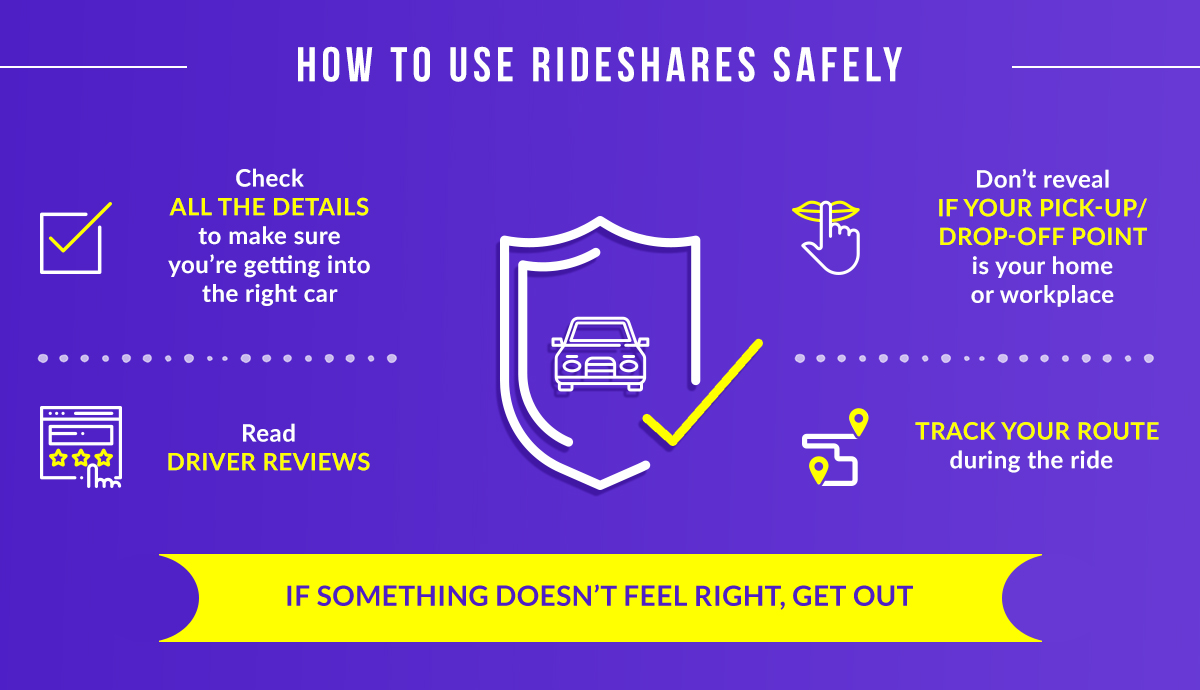 Obviously, attacks on women don’t just happen online. Often attacks spill over to the real world, with perpetrators using technology to help them stalk and abuse their victims.
Obviously, attacks on women don’t just happen online. Often attacks spill over to the real world, with perpetrators using technology to help them stalk and abuse their victims.In fact, a survey of victim aid providers revealed that 79% dealt with victims who had been surveilled using social media. Sometimes perpetrators are people we know, like a controlling partner. Other times, attacks are crimes of opportunity, like stealing a cell phone or taking advantage of someone who’s simply in the wrong place at the wrong time. In any case, from giving a friend the heads up as to where you’ll be, to encrypting the data on your mobile devices, to keeping your passwords secure, there are precautions you can take to keep yourself safe.
How to Safely Use a Ridesharing App
Back in 2014, a woman in New Delhi was raped by her Uber driver. After it was revealed that the driver had a decade-long criminal record that included sexual assault, some were calling for the ridesharing app to be banned altogether. After a slew of bad press, Uber now has a new CEO at the reigns. And it looks like the company is finally ready to take passenger safety seriously by rolling out some new initiatives. The main one that has already been implemented allows you to share your ride with up to five trusted contacts. This means your friends can follow along during your trip and see that you arrived at your destination. If you want, you can also set the trusted contacts feature so that it’s only enabled for nighttime rides. Trusted contacts is similar to Lyft’s Send ETA feature, which allows you to send your route and estimated time of arrival to a friend. For both Uber and Lyft, these messages include the car’s make and model, the license plate number, and a photo of the driver. Uber also has a 911 feature in the works that will allow you to call emergency services with a click of a button, and which automatically provides them with your location in real-time. Other initiatives that Uber is planning include driver background checks and scans of new DUI and criminal offences that can be checked against their list of drivers. In the meantime, here are a few steps you can take yourself in order to stay safe.
5 Ways to Protect Yourself While Using a Ridesharing App
1. Make Sure You’re Getting into the Right Car before hitting the road, check the car’s license plate, make and model, and the driver’s name and photo to make sure everything matches up.2. Don’t Let Your Driver Know if Your Pick-up Point or Destination is Your Home or Place of Work. In fact, if it is, you might want to make a little small talk so you can slip in a white lie to make him think otherwise. For instance, if he asks how you’re doing, you can say “great, excited to be going out to meet friends.” Another option is to give a nearby location as your destination, rather than your exact address, and walk an extra block.
3. Check the Driver’s Reviews one nice feature of ridesharing apps is they allow riders to rate their drivers. If yours has bad reviews, cancel the ride and call another one. To keep from having to wait too long, have a couple of apps already installed on your phone so you can use the one that’ll most quickly get you a reputable driver.
4. Track Your Route if you’re familiar with the area you’re travelling in, you’ll notice if the driver is going the wrong way. But if you don’t, open the map app on your phone and track your route to make sure you’re headed toward the destination you requested. If the route looks strange, speak up.
5. If Something Doesn’t Feel Right, Get Out yes, you may be late for your appointment, and you may be out a few dollars, but if you feel unsafe, ask the driver to pull over and get out of the car. Too often women put themselves in unsafe situations because they think following their gut will lead to awkwardness. Screw that.